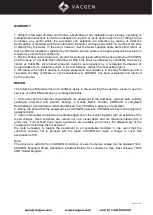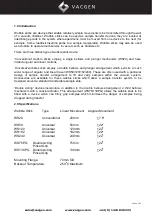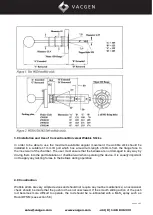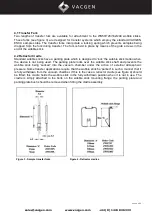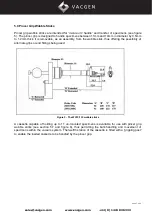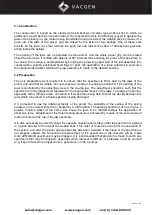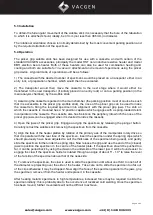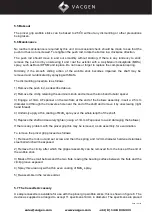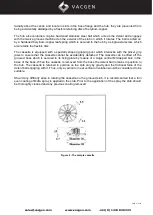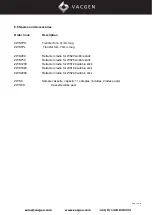
Page 8 of 13
www.vacgen.com
+44 (0) 1424 836 333
5.1 Construction
The construction is based on the standard double bellows universal type wobble stick to which an
additional co-axial bellows has been added. The movement of this third bellows is used to operate the
jaws of the pincer grip, the motion being transmitted along the axis of the wobble stick by means of a
push rod. The jaws of the pincer grip are closed by the action of two springs. One of these acts
directly on the jaws; the other retracts the push rod and resists the effect of atmospheric pressure
acting inside the bellows.
The opening of the jaws can be adjusted to some extent, and the whole pincer grip can be rotated
about the main axis. It is fitted with detents at 90
o
intervals thus enabling the plane of the specimen to
be varied. The rotation is accomplished by bringing the projecting upper part of the jaw assembly into
contact with a suitably positioned fixed finger or post; the application of a force sufficient to overcome
the spring-loaded detent will allow the jaw assembly to rotate to the desired position.
5.2 Preparation
The only preparatory work required is to ensure that the specimen is firmly held by the jaws of the
pincer grip and that a suitable, but not excessive, degree of opening is achieved. The opening of the
jaws is controlled by the adjusting screw in the moving jaw. The adjustment should be such that the
specimen is firmly gripped and registered in the segmental recess in the jaws. Too large an opening,
especially with a thin specimen, can result in the specimen being able to enter too deeply between the
jaws which may result in a fragile specimen being damaged.
If it is desired to use the rotational facility of the pincer, the suitability of the setting of the spring
pressure on the detent should be checked by a trial rotation. The setting should be such as to give a
positive location whilst at the same time allow the jaws to be rotated without the application of
excessive force. Adjustment of the detent spring pressure is achieved by means of the set screw and
locknut located at the top of the jaw assembly.
It is also necessary to correctly orient the cassette capstan post (stub) so that the specimen is aligned
in a plane parallel to the axis of the wobble stick. This must of course be done prior to evacuation of
the system, and after the pincer grip wobble stick has been installed. If the plane of the specimen is
not properly aligned, the removal and replacement of the specimens in the cassette will be made
more difficult and specimens may be dropped. It is recommended that provision is made to catch any
specimens that may be dropped, especially when retrieval is difficult, or problems could be caused
(e.g. if specimens were dropped onto a gate valve, or into a pump).



